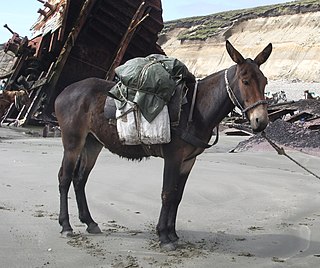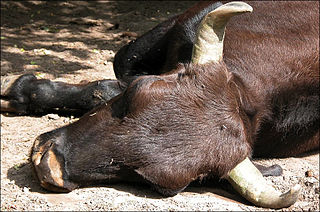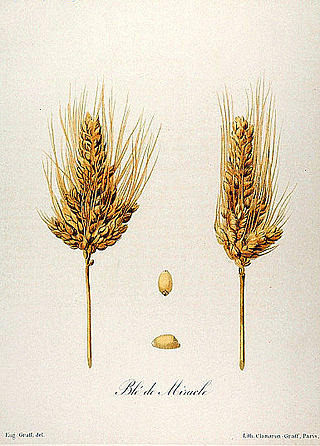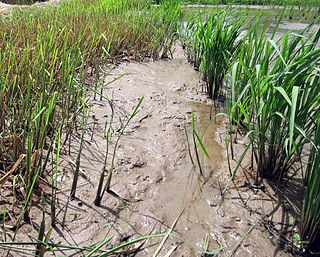This article needs additional citations for verification .(January 2008) |
The gene pool is the set of all genes, or genetic information, in any population, usually of a particular species. [1]
This article needs additional citations for verification .(January 2008) |
The gene pool is the set of all genes, or genetic information, in any population, usually of a particular species. [1]
A large gene pool indicates extensive genetic diversity, which is associated with robust populations that can survive bouts of intense selection. Meanwhile, low genetic diversity (see inbreeding and population bottlenecks) can cause reduced biological fitness and an increased chance of extinction, although as explained by genetic drift new genetic variants, that may cause an increase in the fitness of organisms, are more likely to fix in the population if it is rather small.
When all individuals in a population are identical with regard to a particular phenotypic trait, the population is said to be 'monomorphic'. When the individuals show several variants of a particular trait they are said to be polymorphic.
The Russian geneticist Alexander Sergeevich Serebrovsky first formulated the concept in the 1920s as genofond (gene fund), a word that was imported to the United States from the Soviet Union by Theodosius Dobzhansky, who translated it into English as "gene pool." [2]
Harlan and de Wet (1971) proposed classifying each crop and its related species by gene pools rather than by formal taxonomy. [3]
Gene pool centres refers to areas on the earth where important crop plants and domestic animals originated. They have an extraordinary range of the wild counterparts of cultivated plant species and useful tropical plants. Gene pool centres also contain different sub tropical and temperate region species.

In biology, a hybrid is the offspring resulting from combining the qualities of two organisms of different varieties, species or genera through sexual reproduction. Generally, it means that each cell has genetic material from two different organisms, whereas an individual where some cells are derived from a different organism is called a chimera. Hybrids are not always intermediates between their parents, but can show hybrid vigor, sometimes growing larger or taller than either parent. The concept of a hybrid is interpreted differently in animal and plant breeding, where there is interest in the individual parentage. In genetics, attention is focused on the numbers of chromosomes. In taxonomy, a key question is how closely related the parent species are.

Triticale is a hybrid of wheat (Triticum) and rye (Secale) first bred in laboratories during the late 19th century in Scotland and Germany. Commercially available triticale is almost always a second-generation hybrid, i.e., a cross between two kinds of primary (first-cross) triticales. As a rule, triticale combines the yield potential and grain quality of wheat with the disease and environmental tolerance of rye. Only recently has it been developed into a commercially viable crop. Depending on the cultivar, triticale can more or less resemble either of its parents. It is grown mostly for forage or fodder, although some triticale-based foods can be purchased at health food stores and can be found in some breakfast cereals.

Zea is a genus of flowering plants in the grass family. The best-known species is Z. mays, one of the most important crops for human societies throughout much of the world. The four wild species are commonly known as teosintes and are native to Mesoamerica.

A genetic chimerism or chimera is a single organism composed of cells with more than one distinct genotype. In animals and human chimeras, this means an individual derived from two or more zygotes, which can include possessing blood cells of different blood types, and subtle variations in form (phenotype). Animal chimeras are produced by the merger of two embryos. In plant chimeras, however, the distinct types of tissue may originate from the same zygote, and the difference is often due to mutation during ordinary cell division. Normally, genetic chimerism is not visible on casual inspection; however, it has been detected in the course of proving parentage. In contrast, an individual where each cell contains genetic material from two organisms of different breeds, varieties, species or genera is called a hybrid.

The lentil is an edible legume. It is an annual plant known for its lens-shaped seeds. It is about 40 cm (16 in) tall, and the seeds grow in pods, usually with two seeds in each. As a food crop, the largest producers are Canada and India, producing 29% and 27%, respectively, of the world's total lentils in 2021.

Cicer is a genus of the legume family, Fabaceae, and the only genus found in tribe Cicereae. It is included within the IRLC, and its native distribution is across the Middle East and Asia. Its best-known and only domesticated member is Cicer arietinum, the chickpea.
Heterosis, hybrid vigor, or outbreeding enhancement is the improved or increased function of any biological quality in a hybrid offspring. An offspring is heterotic if its traits are enhanced as a result of mixing the genetic contributions of its parents. The heterotic offspring often has traits that are more than the simple addition of the parents' traits, and can be explained by Mendelian or non-Mendelian inheritance. Typical heterotic/hybrid traits of interest in agriculture are higher yield, quicker maturity, stability, drought tolerance etc.
Canid hybrids are the result of interbreeding between the species of the subfamily Caninae.

A bovid hybrid is the hybrid offspring of members of two different species of the bovid family. There are 143 extant species of bovid, and the widespread domestication of several species has led to an interest in hybridisation for the purpose of encouraging traits useful to humans, and to preserve declining populations. Bovid hybrids may occur naturally through undirected interbreeding, traditional pastoral practices, or may be the result of modern interventions, sometimes bringing together species from different parts of the world.

Introgression, also known as introgressive hybridization, in genetics is the transfer of genetic material from one species into the gene pool of another by the repeated backcrossing of an interspecific hybrid with one of its parent species. Introgression is a long-term process, even when artificial; it may take many hybrid generations before significant backcrossing occurs. This process is distinct from most forms of gene flow in that it occurs between two populations of different species, rather than two populations of the same species.

During 10,000 years of cultivation, numerous forms of wheat, many of them hybrids, have developed under a combination of artificial and natural selection. This diversity has led to much confusion in the naming of wheats. Genetic and morphological characteristics of wheat influence its classification; many common and botanical names of wheat are in current use.
The mechanisms of reproductive isolation are a collection of evolutionary mechanisms, behaviors and physiological processes critical for speciation. They prevent members of different species from producing offspring, or ensure that any offspring are sterile. These barriers maintain the integrity of a species by reducing gene flow between related species.

Hybrid speciation is a form of speciation where hybridization between two different species leads to a new species, reproductively isolated from the parent species. Previously, reproductive isolation between two species and their parents was thought to be particularly difficult to achieve, and thus hybrid species were thought to be very rare. With DNA analysis becoming more accessible in the 1990s, hybrid speciation has been shown to be a somewhat common phenomenon, particularly in plants. In botanical nomenclature, a hybrid species is also called a nothospecies. Hybrid species are by their nature polyphyletic.
Genetic erosion is a process where the limited gene pool of an endangered species diminishes even more when reproductive individuals die off before reproducing with others in their endangered low population. The term is sometimes used in a narrow sense, such as when describing the loss of particular alleles or genes, as well as being used more broadly, as when referring to the loss of a phenotype or whole species.
A doubled haploid (DH) is a genotype formed when haploid cells undergo chromosome doubling. Artificial production of doubled haploids is important in plant breeding.

Plant genetics is the study of genes, genetic variation, and heredity specifically in plants. It is generally considered a field of biology and botany, but intersects frequently with many other life sciences and is strongly linked with the study of information systems. Plant genetics is similar in many ways to animal genetics but differs in a few key areas.

Perennial rice are varieties of long-lived rice that are capable of regrowing season after season without reseeding; they are being developed by plant geneticists at several institutions. Although these varieties are genetically distinct and will be adapted for different climates and cropping systems, their lifespan is so different from other kinds of rice that they are collectively called perennial rice. Perennial rice—like many other perennial plants—can spread by horizontal stems below or just above the surface of the soil but they also reproduce sexually by producing flowers, pollen and seeds. As with any other grain crop, it is the seeds that are harvested and eaten by humans.

Plant breeding is the science of changing the traits of plants in order to produce desired characteristics. It has been used to improve the quality of nutrition in products for humans and animals. The goals of plant breeding are to produce crop varieties that boast unique and superior traits for a variety of applications. The most frequently addressed agricultural traits are those related to biotic and abiotic stress tolerance, grain or biomass yield, end-use quality characteristics such as taste or the concentrations of specific biological molecules and ease of processing.

Frank Harlan Lewis was an American botanist, geneticist, taxonomist, systematist, and evolutionist who worked primarily with plants in the genus Clarkia. He is best known for his theories of "catastrophic selection" and "saltational speciation", which are closely aligned with the concepts of quantum evolution and sympatric speciation. The concepts were first articulated in 1958 by Lewis and Peter H. Raven, and later refined in a 1962 paper by Lewis in which he coined the term "catastrophic selection". In 1966, he referred to the same mechanism as "saltational speciation".
This glossary of genetics and evolutionary biology is a list of definitions of terms and concepts used in the study of genetics and evolutionary biology, as well as sub-disciplines and related fields, with an emphasis on classical genetics, quantitative genetics, population biology, phylogenetics, speciation, and systematics. Overlapping and related terms can be found in Glossary of cellular and molecular biology, Glossary of ecology, and Glossary of biology.